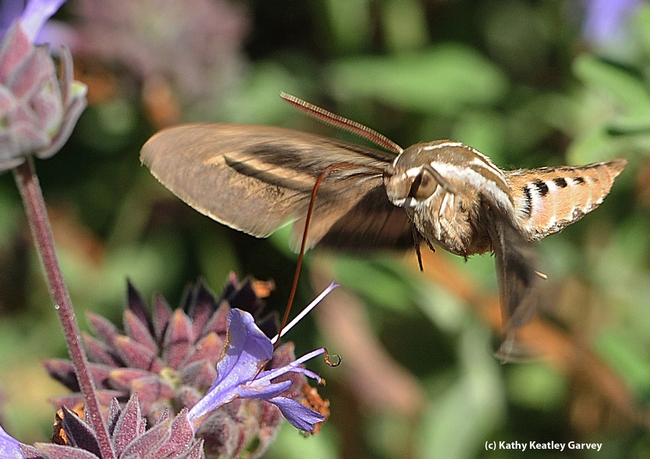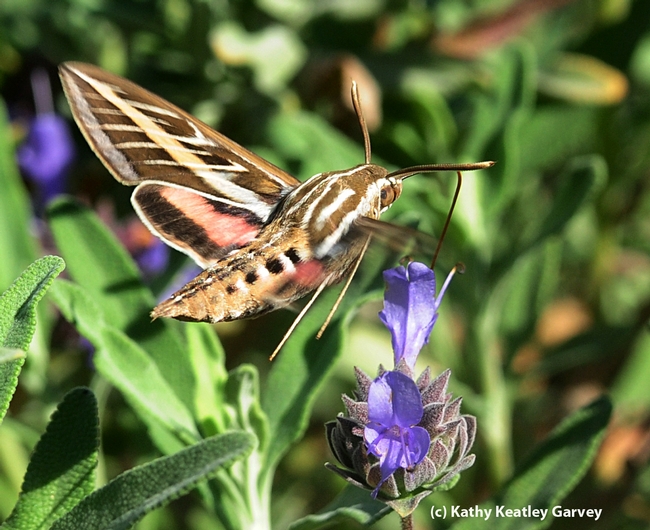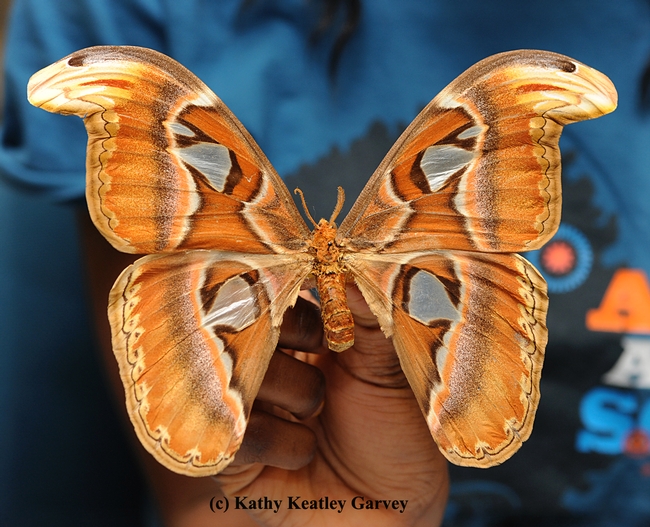Moths.
Mother's Day.
The two go together like a moth to a flame, so why not have "Moth-er's Day?"
And that's exactly what the Bohart Museum of Entomology is doing from 1 to 4 p.m.,Sunday, May 4 in Room 1124 of Academic Surge, Crocker Lane, UC Davis. The open house is free and open to the public.
The Atlas moth (Attacus atlas), the world's largest moth with the greatest wing area of 10 to 12 inches, will be among the insect specimens displayed. The Atlas is found in the tropical and subtropical forests of Southeast Asia--and in the Bohart Museum!
Visitors will see the incredible diversity of moths, and learn the differences between moths and butterflies. "There is far greater diversity among moths than butterflies," said Tabatha Yang, education and outreach coordinator.
Both moths and butterflies are in the order Lepidoptera, which refers to the scales on their wings.
Another large moth on display will be the "bat moth" or "black witch" (Ascalapha odorata), found in Central America, South America, Bahamas and parts of the southwestern United States. In Mexican and Caribbean folklore, it is considered a harbinger of death. The insect played a role in the movie, "Silence of the Lambs" but the name was changed to "Death's-head Hawkmoth."
The white-lined Sphinx moth (Hyles lineata) is another critter you'll see. It flies both at night and during the day and has a wing span length between 2.7 and 3.9 inches. Some folks know it by its nickname, "the hummingbird moth." A member of the Sphingidae family, the white-lined sphinx moth is found throughout most of the United States, plus Mexico, Central America and Canada.
What other kinds of moths will you see on Moth-'ers Day?
- The White Witch (Thysania agrippina), which holds the record for the largest wingspan in an insect (one Brazilian specimen has a wingspan of almost 12 inches). Note that the Atlas has the greater wing area.
- Tomato Hornworm (Manduca quinquemacaulata), what you don't want to see in your garden.
- Sunset Moth (Urania leilus), a colorful day-flying moth often mistaken for a butterfly
- Cosmosoma spp., a genus of clear-winged moths
- Automeris spp., a genus of moths with distinctly large owl-eyes on the hindwings
- Sesiidae, a family of moths mimicking wasps
- Bee-Hawk Moths (Hemaris spp.), a genus of sphinx moths mimicking bumble bees, and sometimes mistaken for hummingbirds
- Moon Moths (Argema spp.), found in Africa and Asia
- Tiger Moths (family Arctiidae), amazing butterfly mimics
- Indian Meal Moths (Plodia interpunctella), also called pantry moths (the caterpillars are grain pests)
The Moth-er's Day event is also a good time to explore the Bohart Museum gift shop for Mother's Day gifts, including jewelry (necklaces, pins and earrings), books and other items suitable for entomology fans.
Visitors can hold live insects such as Madagascar hissing cockroaches, Vietnamese walking sticks, walking leaves and a rose-haired tarantula.
The Bohart Museum, directed by Lynn Kimsey, professor of entomology at UC Davis, was founded in 1946 by the late Richard M. Bohart. Dedicated to teaching, research and service, the museum houses nearly eight million insect specimens collected globally. It boasts the seventh largest insect collection in North America.
Attached Images:


